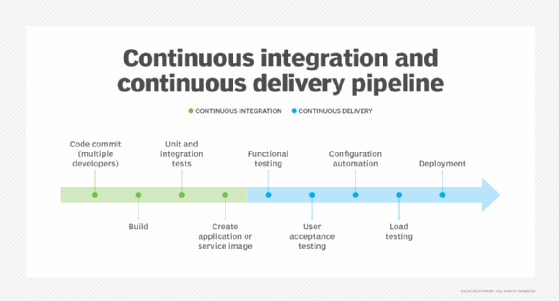
Sergey Nivens - Fotolia
Experts explain how AWS Lambda works internally
AWS Lambda introduces its fair share of benefits and problems. In case you missed it, here are three expert tips to help serverless functions find a comfortable place within your software systems.
AWS Lambda played a major role in introducing users to basic serverless architecture and code execution methods. But for users who want to configure Lambda to play a larger role in their application architecture, the challenges are just as prevalent as the benefits.
This article roundup highlights three expert tips that provide practical advice -- including real-world code examples -- on how AWS Lambda works internally. We look at the architectural possibilities that Lambda can provide your team, the burdensome hurdles it can introduce and the steps you can take to find a comfortable place for Lambda within your software ecosystem.
Lambda, API Gateway and microservices compatibility can achieve CI/CD
By design, microservices can help decouple app components to boost speed and increase scalability. The tricky thing is that these isolated services still need to regularly connect and communicate. By combining your microservices deployment with Lambda and API Gateway, you can avoid some of these pressing integration issues.
This strategy uses AWS Lambda to run microservices, and uses API Gateway's custom domain configuration to properly map and direct those microservices across the connected systems. AWS also provides tools that help with load balancing and CI/CD pipeline reliability.

Explore this expert tip on microservices configuration through AWS to learn more about how these two services facilitate pipeline efficiency. Discover how AWS Lambda works internally with microservices to facilitate an Agile lifestyle and empower CI/CD development aspirations.
Shared Lambda functions can help microservices access control
In the AWS ecosystem, Amazon API Gateway enables users to customize access control for microservices in order to shore up both authorization and authentication across API endpoints. However, that capability can create specific error message issues; a failed authentication error message likely will not tell users whether their credentials were wrong or if they simply do not have access permissions.
Luckily, shared AWS Lambda functions can help solve this access problem. Through plenty of code rigging, these shared functions can create a more efficient, simplified mode of access control.
This piece on shared Lambda functions provides real-world code examples that demonstrate how to strategically use these functions to federate microservices identity and access control, as well as combat error message issues that stem from custom authentication and authorization.
Stay up to date on new features for AWS Lambda
AWS Lambda is now five years old, and serverless is still burgeoning in a forward-thinking corner of the market. With this in mind, AWS has continued to build upon initial Lambda offerings as the number of users who embrace serverless continues to grow.
Announced at AWS re:Invent 2019, Provisioned Concurrency is the latest feature set to improve Lambda. Provisioned Concurrency aims to put an end to cold starts, a latency issue that can occur when certain functions are triggered and result in frustrating timeouts. AWS claims that this new feature will help users implement "interactive services," like synchronous APIs and web and mobile back ends, as well as facilitate microservices that demand zero latency.
Customers who take advantage of this new feature will be charged $0.015 per GB-hour for the amount of concurrency they provision and $0.035 per GB-hour for time spent of code execution.
Use microservices to manage APIs in an AWS Lambda architecture
While using the Serverless Framework -- an API creation and management tool -- in an AWS Lambda architecture, you may venture into unchartered territory with APIs, such as new resource limit predicaments in CloudFormation. This will mean you need to isolate code from other services.
With verbatim code examples, this firsthand account of one of these resource nightmares demonstrates how to solve unforeseen serverless API problems. It also reveals how to create an even more reliable architecture by using Serverless Framework to deploy "glue code" that connects individual microservices to a single API gateway.
Even if you aren't a Serverless Framework user, and don't necessarily need to understand how AWS Lambda works internally, this illustration can still help strengthen your understanding of how to simultaneously manage serverless code, microservices and APIs no matter what platform you use.







